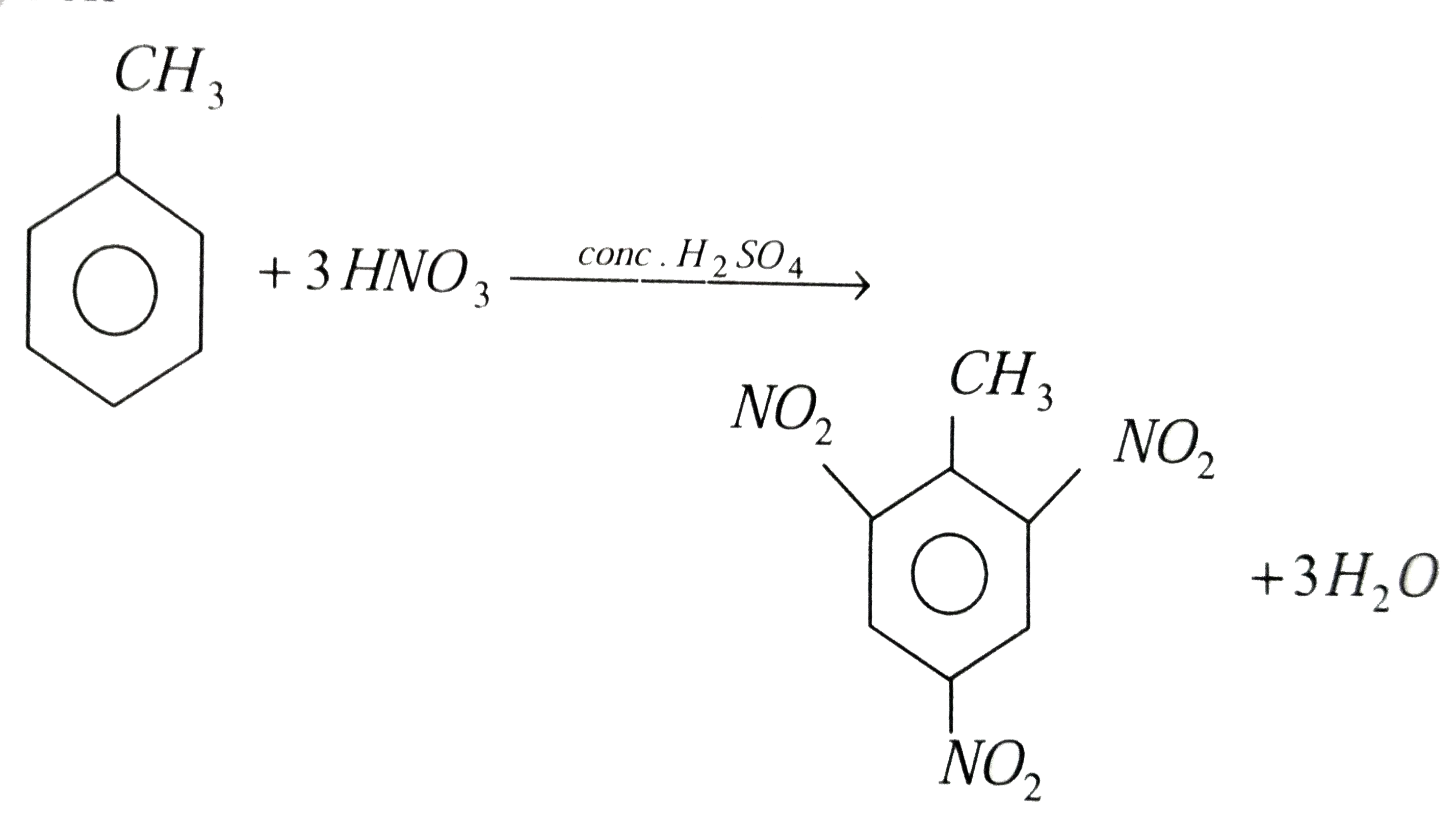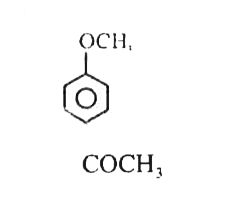Explore topic-wise InterviewSolutions in .
This section includes InterviewSolutions, each offering curated multiple-choice questions to sharpen your knowledge and support exam preparation. Choose a topic below to get started.
| 19501. |
When primary amine reacts with chloroform in ethanolic KOH, then the product is |
|
Answer» an ISOCYANIDE |
|
| 19502. |
Which of the following pairs has the same size ? |
|
Answer» `Zr^(4+), HF^(4+)` |
|
| 19503. |
Which of the following oxidation state si common for all lanthanoids? |
| Answer» ANSWER :b | |
| 19504. |
Which one of the following characteristics are associated with adsorption? |
|
Answer» `DeltaG and DeltaH` are negative but `DeltaS` is POSITIVE |
|
| 19505. |
Which of the following amino acids contains a thiol group in the side chain |
|
Answer» METHIONINE |
|
| 19506. |
Which of the following is a polymer containing nitrogen |
| Answer» ANSWER :D | |
| 19507. |
Which of the followingether is formed from alcohol and diazomethane ? |
|
Answer» ETHOXYPROPANE |
|
| 19508. |
Zn|Zn^(2+)(a=0.1 M)||Fe^(2+)(a=0.01M)|Fe the emf of the above cell is 0.2905 V Equilibrium constant for thecellreactionis |
|
Answer» `10^(0.32//0.591)` The halfcell reactionare `I Zn(s) rarr Zn^(2+) (aq)+2e^(-)` `ii Fe^(2+) (Aq)+2e^(-) rarr Fe(s)` `Zn(s) +Fe^(2+) (Aq) rarr Zn^(2+)(aq)+Fe(s)` on applyingNernstequation `E_(cell) =E_(cell)^(@) =0.2905 +0.295 =0.32 V` At equilibrium `E_(cell)=0` `E_(cell)^(@) =(0.0591) /(N ) log_(10) k_(c )` `0.32 =(0.591)//(2) log_(10)k_(c )` or `k_(c )=10^(0.32//0.295)` |
|
| 19509. |
What is known as activation energy? How is activation energy affected by (i) the use of a catalyst ? (ii) a rise in temperature ? |
|
Answer» Solution :Activation energy is the extra energy that must be SUPPLIED to the reactants so that they can change into products. (i) Activation energy is LOWERED by the use of a catalyst. This is because the catalyst reacts with the reactants to from an intermediate complex which changes into the product. The FORMATION of intermediate complex involves lower activation energy as it is formed EASILY. (ii) There is no EFFECT of activation energy with the increase of temperature. |
|
| 19510. |
Which solution is used as electrolyte in the extraction of aluminium metal ? |
|
Answer» `Al_(2)O_(3).H_(2)O` |
|
| 19512. |
Which of the following pairs has the same ionic are: |
|
Answer» `Fe^(2+),Ni^(2+)` |
|
| 19513. |
When 0.04 faraday of electrcity is passed through a solution of CaSO_4. Then the weight of Ca^(2+) metal deposited at the cathode is |
|
Answer» 0.2 gm `E_(Ca)=(40)/(2)=20` `W_(Ca)=E_(Ca)XX`No.of faradays=`20xx0.04=0.8gm` |
|
| 19514. |
When glucose reacts with bromine water , the major product is : |
|
Answer» GLUCONIC ACID |
|
| 19515. |
Which acts as negative catalyst: |
|
Answer» LEAD tetraethyl as antiknock compound |
|
| 19516. |
Which kind of voids are surrounded by six spheres ? |
| Answer» SOLUTION :OCTAHEDRAL | |
| 19517. |
X-ray diffraction studies show that copper crystallizes in an fcc unit cell with cell edge of 3.608 xx 10^(-8) cm. In a separate experiment, copper is determined to have a density of 8.92 g//cm^3 calculate the atomic mass of copper. |
|
Answer» `M = (N_A xx d xx a^3)/(Z) =( 6.023 xx 10^(23) xx 8.92 xx (3.608)^3 xx 10^(-24))/(4)= 63.08 g mol^(-1)` or M = 63.1 u |
|
| 19518. |
What is the end product which is obtained on the nitration of toluene |
|
Answer» o-nitrotoluene 
|
|
| 19519. |
What is the difference between multimolecular and marcromolecular colloids ? Give one example of each. How are associated colloids different from these two types of colloids ? |
|
Answer» Solution :Multimolecular and Macromolecular colloids ? GIVE one example of each. How are associated colloids different from these TWO types of colloids? Multimilecular and Macromolecular colloids. DIFFERENCE between associated colloids and macromolecular colloids. Multimolecular colloids are due to large size of the MOLECULES themselves (e.g., starch) so large that their size lies in the colloidal range. However, associated colloids are formed by electrolytes so that they dissociate into ions and these ions associated together to from ionic micelles whose size lies in the colloidal range, e,g., soaps. This happens above a particular concentration (called critical micellisation concentration) and above a particular temperature,called Kraft temperature. |
|
| 19520. |
When the same charge is passed through the solutions of different electrolytes in series, the amountsof elements deposited in the electrodes are in the ratio of their |
|
Answer» atomic NUMBERS |
|
| 19521. |
What is corrosion? Describe the electrochemical phenomenon of rusting of iron |
| Answer» SOLUTION :CORROSION is the process of slowly EATING away of the metal due to attack of the atmospheric gases on the surface of the metal resulting into the formation of compounds such as OXIDES, sulphides, carbonate, etc. the corrosion of iron is called rusting. Accrording the theory of rusting impure iron surface behaves as a small electrochemical CELL in the presence of water containing dissolved oxygen or `CO_(2)`. | |
| 19522. |
Which amount of chlorine gas liberated at anode, if 1 ampere current is passed for 30 minutes from NaCl solution? |
|
Answer» `0.66` moles `Q = It "" ` Amonut of current passed `= 1 xx 30 xx 60 = 1800 C` The amount of `Cl_2` liberated by passing 1800 coulomb of electric charge `=(1 xx 1800 xx 71)/(2 xx 96500)` `= 0.66 g`. |
|
| 19523. |
When cumene is oxidised in the presence of air followed by treatment with dilute acid, the products obtained are |
|
Answer» BENZOIC ACID and Methanol |
|
| 19524. |
Which does not react with cold water : |
|
Answer» SiC |
|
| 19525. |
Which of the following elements hasthe highest electronegativity ? |
|
Answer» F |
|
| 19526. |
Which is corrent Lewis structure with formal charge on particular atom? |
|
Answer»
|
|
| 19527. |
Which has maximum freezing point ? |
|
Answer» 1 molar of NACL solution |
|
| 19528. |
When benzene diazonium chloride solution is boilded, it yields |
|
Answer» Benzene 
|
|
| 19529. |
Which of the following polymer is used for coating as a thin layer on the inner side of nonsticky untensil ? |
|
Answer» BAKELITE |
|
| 19530. |
Which is least stable in aqueous medium? |
|
Answer» `Fe^(2+)` |
|
| 19531. |
What is the time in sec) required for depositing all the silver present in 125 ml of 1M AgNO_3solution by passing a current of 241.25 amperes ? (1F=96500 coulombs) |
|
Answer» 10 |
|
| 19532. |
Which of the following are example of synthetic rubber ? |
|
Answer» POLYCHLOROPRENE |
|
| 19533. |
Which one of the following pair is the strongest pesticide |
|
Answer» 666 and ether |
|
| 19534. |
What are alloys ? Name an important alloy which contains some of the lanthanoid metals. Mention its uses. |
|
Answer» Solution :Alloys : A alloy is a HOMOGENEOUS mixture of two or more metals or non-metals. It is prepared by blending the metals (and / or non-metal) in molten state. An important alloy containing lanthanoid metal (-95%) iron (-5%), traces of S, C, CA and AL is misch metal. MISCHMETAL is used in Mg-based alloy to PRODUCE bullets, shell and lighter flint. |
|
| 19535. |
Which compound does not form iodoform with alkali and iodine ? |
|
Answer» ACETONE |
|
| 19536. |
Which acts as poison for Pd-charcoal in Lindlar's catalyst ? |
|
Answer» `BaSO_4` |
|
| 19537. |
Which will lead to a change in the rate constant K of a reaction: |
|
Answer» A CHANGE in the pressure |
|
| 19538. |
The standard potential of the following cell is 0.23 V at 15^@C and 0.21V at 35^@C (Pt) H_2(g) |HCl(aq)|AgCl(s)|Ag(s) Calculate Delta H^@ and Delta S^@ for the cell reaction by assuming that these quantities remain unchanged in the range 15^@ to 35^@C |
|
Answer» Solution :`(DeltaG^@)_(298)=-nFE^@=-1 times 96500times 0.23=-22195 J =-22.195 kJ` `(DELTA G^@)_(398)=-1 times 96500 times 0.21=-20265 J=-20.265 kJ` Now we have H^@-T DeltaS^@` `therefore -22.195 =Delta H^@-288 Delta S^@` and `-20.265 =Delta H^@-308.Delta S^@` for these equations, we GET `Delta H^@=49.98 kJ` `Delta S^@=-96.50kJ` |
|
| 19539. |
Write the IUPAC name of major product formed in Friedel-Crafts acyfation of a anisole |
Answer» SOLUTION :4 METHOXY ACETOPHENONE 
|
|
| 19540. |
Which of the following compounds will give racemic mixture on nucleophilic substitution by OH^(-) ion- (a) CH_(3)-underset(C_(2)H_(5))underset(|)(C)HBr (b) CH_(3)underset(C_2H_5)underset(|)overset(Br)overset(|)(C)-CH_(3) (c) CH_(3)underset(C_2H_5)underset(|)(C)H-CH_(2)Br. |
|
Answer» (a) |
|
| 19541. |
Why can’t aluminium be reduced by carbon ? |
|
Answer» |
|
| 19542. |
The standard potential of the following cell is 0.23 V at 15^@C and 0.21V at 35^@C (Pt) H_2(g) |HCl(aq)|AgCl(s)|Ag(s) Calculate the solubility of AgCl in water at 25^@C Given: E_(Ag^+,Ag)^@=0.80V at 25^@C |
|
Answer» Solution :In the given cell `E_(cell)^@=E_(AgCl,Cl^-)^@-E_(H^+,H_2)^@` `0.22=E_(AgCl,Cl^-)-0`…..(AVERAGE VALUE of `E_(cell)^@` is considered ) or `E_(AgCl,Cl^-)=0.22` Let us now consider the following cell to calculate `K_(sp) (AgCl)` `Ag=Ag^+ +e, E^@=-0.8` (given) `AgCl+e=Ag+Cl^(-),E^@=0.22` (calculated) `therefore` for the cell REACTION `AgCl=Ag^+ +Cl^-` `E_(cell)=(E_(AgCl,Cl^-)^@-E_(Ag^+,Ag)^@)-0.0591/1 log[Ag^+][Cl^-]` At equilibrium `E_(cell)=0 and R.Q=K_(sp)` `therefore E_(AgCl,Cl^-)^@-E_(Ag^+,Ag)^@=0.0591 log K_(sp)` `0.22-0.8=0.0591 log K_(sp)` `therefore K_(sp)=1.535 times 10^-10` `therefore` solubility of `AgCl=sqrt(K_(sp))=sqrt(1.535 times 10^-10)` `=1.239 times 10^-5 mol e//L` |
|
| 19543. |
When n-butyl magnesium bromide is treated with water, the product is _______. |
|
Answer» isobutane |
|
| 19544. |
Which of the following pairs form the same osazone ? |
|
Answer» Glucose and fructose |
|
| 19545. |
Write IUPAC name of the following : . |
| Answer» SOLUTION :3,5 Dimethylphenylethanoate | |
| 19546. |
Which reagent is used to convert ethylene glycol to ethylene? |
| Answer» SOLUTION :`PI_3` | |
| 19547. |
The species having bond order different from that in CO is : |
|
Answer» `NO^(-)` `B.O=(8-2)/(2)=3` `NO^(-):KK(sigma_(2s))^(2)(sigma_(2s)^(**))^(2)(pi_(2p_(x)))^(2)(pi_(2p_(y)))^(2)(sigma_(2p_(z)))^(2)(pi_(2p_(x))^(**))^(1)(pi_(2p_(y))^(**))^(1)` `B.O.=(8-4)/(2)=2` `NO^(+):KK(sigma_(2s))^(2)(sigma_(2s)^(**))^(2)(pi_(2p_(x)))^(2)(pi_(2p_(y)))^(2)(sigma_(2p_(z)))^(2)` `B.O.=(8-2)/(2)=3` `CN^(-): KK(sigma_(2s))^(2)(sigma_(2s)^(**))^(2)(pi_(2p_(x)))^(2)(pi_(2p_(y)))^(2)(sigma_(2p_(z)))^(2)` `B.O.=(8-2)/(2)=3` `N_(2):KK(sigma_(2s))^(2)(sigma_(2s)^(**))^(2)(pi_(2p_(x)))^(2)(pi_(2p_(y)))^(2)(sigma_(2p_(z)))^(2)` `B.O.=(8-2)/(2)=3` `therefore NO^(-)`has different BOND order. |
|
| 19548. |
Which group CANNOT be introduced in an aromatic ring by the nucleophilic substitution of halide group? |
| Answer» ANSWER :C | |
| 19549. |
Which type of isomerisms are possible with the molecular formula Co(NO_2)_3. 2H_2NCH_2CH_2NH_2. |
|
Answer» Solution :Linkage, geometrical and optical isomerisms are possible.Due to the PRESENCE of AMBIDENTATE LIGAND. `NO_2,` it exhibits linkage isomerism.` [Co(en)_2(NO_2)_2]NO_2`can exhibit geometrical isomerism and its cis ISOMER is optically active. |
|
| 19550. |
Which can not be used as acylating agent: |
|
Answer» `RCOBr` |
|



